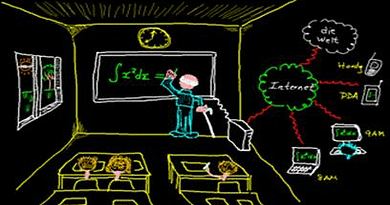How To Delete Windows Files on Second Hard Disk Drive or SSD
Updated on / dernière mise à jour : 12/09/2023
Solution
If you've installed Windows on your computer's other hard drive or SSD, you may want to delete all the Windows files that are still taking precious space on your previous drive (ssd or hdd). You may then notice that – for security reasons – Windows won't allow you to delete the files so easily. There is a way though. Follow the following steps:
1) Open the "Windows Terminal" on your desktop (you can type "terminal" in the search bar);
2) right-click on "Terminal" and select the "Run as administrator" option; when the popup appears, click on the "Yes" button;
3) copy this command to your terminal and press the enter key:
* Read this before completing steps 3 and 4: you must replace "D:\Windows" with the proper location of the Windows' directory you want to delete. The "Y" at the end of the first command means "Yes"; if you are using a desktop in another language (let's say French), you would need to replace "Y" by "O" (for "Oui", which means yes in French). If using another language, "administrators" in the second command would also need to be changed (in French, you would then replace "administrators" by "administrateurs"). Be careful though not to delete your newly installed Windows folder instead and always make copies of your important files prior to any such deletion.
takeown /F "D:\Windows" /A /R /D Y
4) copy this command to your terminal and press the enter key:
icacls "D:\Windows" /T /grant administrators:F
5) now, open your files' manager, right-click on the Windows folder you want to delete (in our example, this would be "D:\Windows") and proceed with the deletion. Once deleted, don't forget to use a tool such as CCleaner to clean your computer's registry.
HDDs and SSDs storage devices
Hard Disk Drives (HDDs) and Solid State Drives (SSDs) are two common types of data storage devices used in computers and other digital devices. While both serve the same purpose of storing data, there are significant differences between the two in terms of how they operate, their performance and cost.
A hard disk drive (HDD) is a traditional mechanical storage device that uses spinning magnetic disks to store and retrieve data. A read/write head moves across the disk's surface to read or write data, with the spinning of the disk determining the speed of data transfer. HDDs have been around for several decades and remain popular due to their cost-effectiveness, large storage capacities and ability to be upgraded or replaced easily.
A Solid State Drive (SSD), on the other hand, is a newer type of storage device that uses flash memory to store data. Unlike HDDs, SSDs have no moving parts, which makes them faster and more durable than traditional hard drives. SSDs are also more energy-efficient and less susceptible to damage caused by drops or bumps, making them a popular choice for portable devices such as laptops and tablets.
The main differences between HDDs and SSDs can be summarized in the following categories:
- Speed: SSDs are significantly faster than HDDs, with read and write speeds that can be up to 10 times faster than traditional hard drives. This makes them ideal for tasks that require quick access to data, such as booting up a computer or opening large files.
- Durability: As SSDs have no moving parts, they are less susceptible to damage caused by drops or bumps, which makes them a popular choice for portable devices such as laptops and tablets.
- Cost: SSDs are generally more expensive than HDDs, especially at higher storage capacities. However, the price gap is gradually decreasing as SSD technology becomes more widespread.
- Capacity: HDDs are still the go-to choice for high-capacity storage needs, with some models offering up to 18TB of storage. SSDs, on the other hand, are generally limited to smaller capacities, with most consumer-grade SSDs topping out at around 2TB.
- Upgradability: Unlike SSDs, HDDs can be easily upgraded or replaced without the need for special tools or expertise.
Top 3 HDD manufacturers:
- Seagate – https://www.seagate.com/
- Western Digital – https://www.westerndigital.com/
- Toshiba – https://www.toshiba.com/
Top 5 SSD manufacturers:
- Samsung – https://www.samsung.com/us/computing/memory-storage/solid-state-drives/
- Kingston – https://www.kingston.com/us/ssd
- Crucial – https://www.crucial.com/ssd
- Sandisk – https://www.sandisk.com/ssd
- Western Digital – https://www.westerndigital.com/en-ca/products/ssd/internal-ssd




